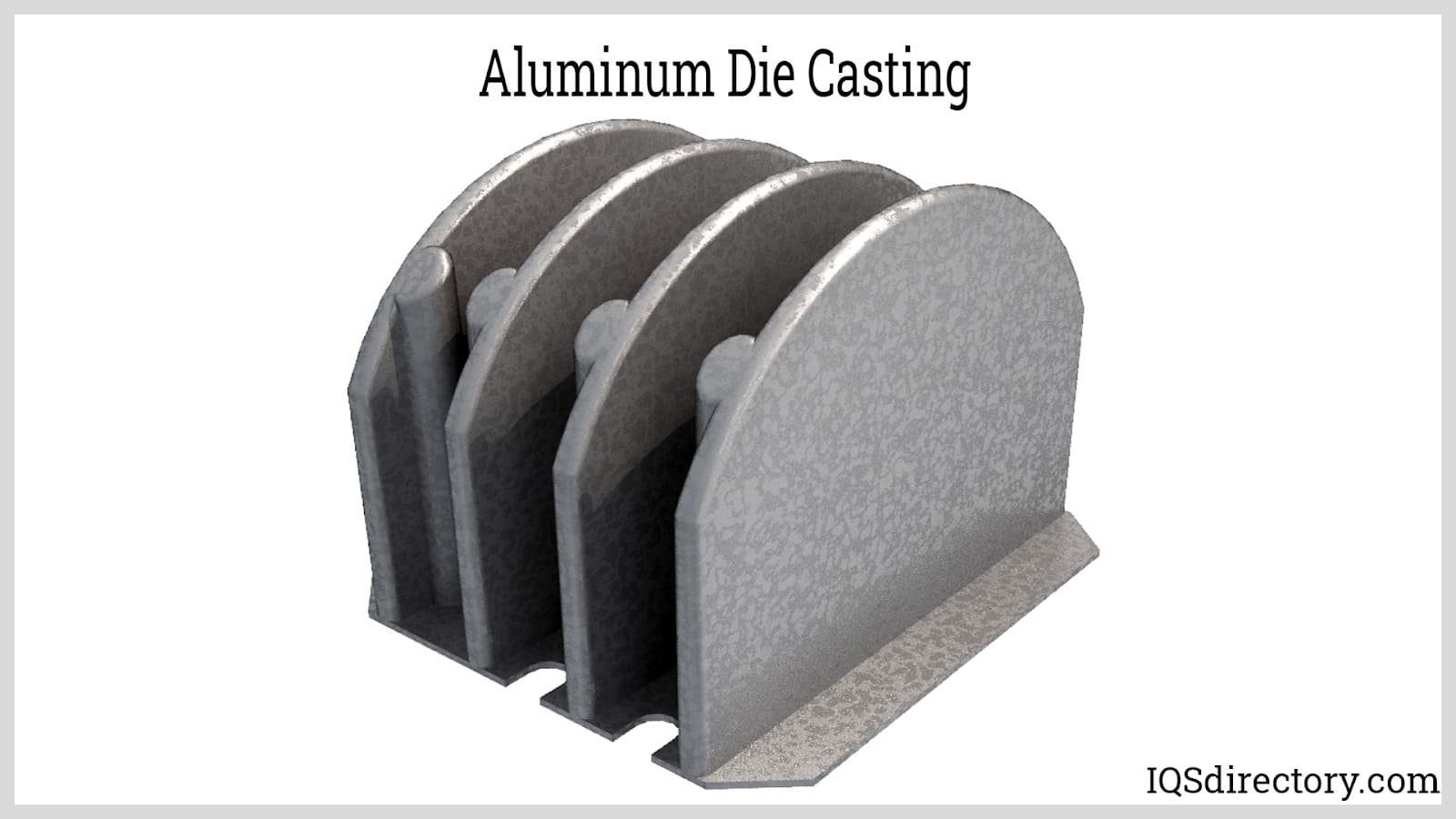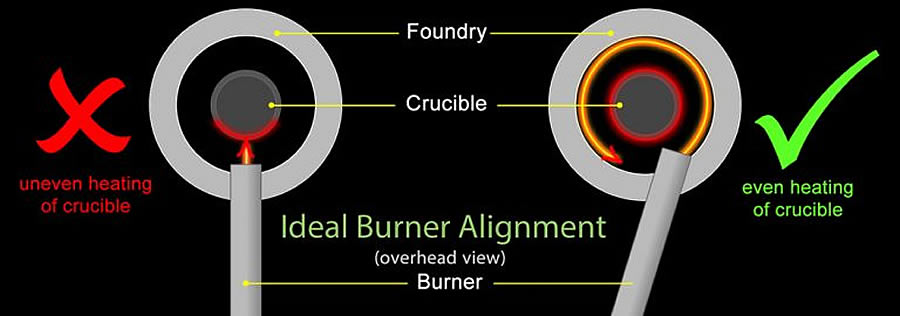Understand how Aluminum Foundry Wisconsin helps deliver better casting outcomes
Just How Aluminum Foundry Adds To Improvements in Aerospace Engineering
Aluminum foundries are important to developments in aerospace design. They produce light-weight, high-strength parts that are essential for contemporary aircraft. Via sophisticated spreading strategies, these factories create intricate geometries that enhance architectural stability. In addition, the development of superior Aluminum alloys supports the market's concentrate on gas efficiency and sustainability. Challenges continue to be in the manufacturing process. Understanding these aspects discloses the extensive influence of Aluminum on aeronautics's future.
The Value of Lightweight Materials in Aerospace Design
As the aerospace industry continues to progress, the significance of lightweight products ends up being progressively obvious. The need for efficiency and sustainability drives designers to focus on the use of materials that lower total weight without endangering structural stability. Light-weight products, specifically Aluminum, play a vital function in enhancing gas efficiency, improving payload ability, and increasing the general performance of aircraft.
The assimilation of these products permits for cutting-edge layouts, enabling suppliers to develop more wind resistant forms that can endure extreme problems. The decrease in weight not just reduces functional expenses but likewise adds to a lowered ecological impact, straightening with international initiatives towards sustainability in air travel.
Advanced Casting Techniques in Aluminum Foundries
Advanced spreading methods in Aluminum shops play a vital role in aerospace engineering by making it possible for the production of exact and lightweight components. Innovations in mold and mildew layout and accuracy spreading processes are essential in attaining ideal efficiency and structural integrity. In addition, the growth of lightweight alloys boosts the general performance and efficiency of aerospace applications.
Cutting-edge Mold And Mildew Style
Innovative mold and mildew layout plays an important function in the performance and efficiency of Aluminum shops, especially within the aerospace field. By leveraging innovative materials and techniques, contemporary mold and mildews can be engineered to hold up against heats and pressures, guaranteeing peak efficiency throughout the casting procedure. These layouts typically integrate complicated geometries that enable the production of light-weight yet structurally sound elements, important for aerospace applications. Additionally, making use of computer-aided layout (CAD) software application facilitates exact modeling, allowing factories to mimic and improve mold designs before physical production begins. This not only improves the quality of cast parts however also lowers waste and preparation, resulting in significant expense financial savings. Generally, cutting-edge mold and mildew design is a foundation of progression in Aluminum Foundry technology for aerospace design.
Accuracy Casting Procedures
The efficiency of cutting-edge mold styles flawlessly incorporates with accuracy casting procedures, which are crucial for producing top quality Aluminum parts in aerospace design. These processes, consisting of sand spreading, pass away casting, and investment casting, guarantee the development of complicated geometries with tight tolerances. Advanced techniques like vacuum spreading and pressure pass away casting improve the honesty and surface area coating of the last products. Precision spreading lessens product waste while making the most of the mechanical buildings of Aluminum, essential for aerospace applications. Furthermore, using real-time surveillance and advanced simulation devices throughout the casting procedure permits for instant adjustments, resulting in enhanced quality assurance. Collectively, these precision spreading processes setting Aluminum factories at the forefront of aerospace innovation, supporting the industry's need for integrity and efficiency.
Lightweight Alloy Advancement
As aerospace engineers seek to improve fuel performance and efficiency, light-weight alloy growth ends up being a crucial focus in Aluminum foundries. These shops utilize advanced spreading methods to produce alloys that provide premium strength-to-weight ratios. Technologies in alloy structure, consisting of the unification of aspects like lithium and magnesium, enable the manufacturing of materials that withstand severe conditions while minimizing overall airplane weight. Techniques such as die spreading and investment casting assist in the precision manufacturing of complex forms, which are essential for aerospace applications. Furthermore, ongoing research study intends to enhance these alloys for boosted mechanical residential or commercial properties and raised durability. By prioritizing light-weight alloy advancement, Aluminum factories greatly contribute to the evolution of aerospace design, leading the way for extra effective and lasting airplane designs.

Enhancing Architectural Stability Via Aluminum Components
Aluminum parts supply substantial benefits in improving structural stability within aerospace design. Their light-weight nature adds to overall performance while maintaining toughness, which is vital for aircraft performance. In addition, the stress and anxiety resistance residential properties of Aluminum assistance assure the durability and reliability of aerospace structures under different functional problems.
Lightweight Product Advantages
While traditional products usually compromise weight for toughness, using Aluminum parts in aerospace engineering uses substantial advantages in architectural honesty. Aluminum's light-weight nature adds to general design performance, enabling more structured aircraft that consume less gas, therefore enhancing sustainability. The material's outstanding strength-to-weight proportion warranties that elements maintain sturdiness without including unnecessary mass. This quality fosters improved efficiency and agility in trip, as well as maximized haul capabilities. In addition, Aluminum's resistance to corrosion extends the lifespan of aerospace frameworks, decreasing upkeep costs and boosting safety. As makers significantly adopt Aluminum alloys, the aerospace market experiences a transformative change towards more efficient and reliable design options that focus on both efficiency and environmental duty.
Stress Resistance Characteristics
Although different products have distinct residential properties, Aluminum's extraordinary stress resistance stands apart as a critical factor in enhancing the architectural integrity of aerospace components. This resistance plays an important function in guaranteeing that aircraft can withstand various functional anxieties, including fatigue, influence, and ecological problems. Aluminum alloys, especially engineered for aerospace applications, exhibit high tensile strength while keeping light-weight features, enabling designers to design extra efficient frameworks - Aluminum Foundry. In addition, the capacity of Aluminum to withstand cyclic loading without significant deformation adds to the long life and dependability of aerospace parts. As advancements continue in Aluminum Foundry techniques, the development of stress-resistant Aluminum parts guarantees further renovations in efficiency, safety, and efficiency across the aerospace sector, strengthening Aluminum's role as a recommended material in modern engineering
Gas Effectiveness Improvements Driven by Aluminum Innovations
As the aerospace industry looks for to improve gas effectiveness, ingenious uses Aluminum have actually emerged as a crucial service. Aluminum's lightweight nature notably reduces airplane weight, enabling lower gas usage during flight. This decrease in weight is important, as also little decreases can lead to significant improvements in total gas economy.
Advanced Aluminum alloys, made for improved toughness and durability, make it possible for manufacturers to develop parts that preserve architectural integrity while minimizing mass - Aluminum Foundry. Furthermore, the assimilation of Aluminum in airframes and engine components facilitates enhanced the rules of aerodynamics, adding to reduced drag and raised performance
The adoption of Aluminum in aerospace not just meets the demand for fuel-efficient style but also straightens with regulatory pressures for lower discharges. As these developments go to these guys remain to advance, they play a significant function in establishing new benchmarks for gas performance, making sure that the aerospace field can satisfy growing environmental and financial difficulties.

The Duty of Aluminum in Sustainable Air Travel Practices
The enhancing focus on lasting aeronautics methods has positioned Aluminum as a crucial product in the mission for greener aircraft design. Understood for its light-weight residential properties, Aluminum considerably decreases airplane weight, bring about reduced gas intake and exhausts. Its recyclability further improves its sustainability profile, as Aluminum can be reused indefinitely without loss of top quality. This particular sustains a circular economic climate within the see aviation field, decreasing waste and source depletion.
Additionally, developments in Aluminum alloys have actually improved their strength and deterioration resistance, permitting longer service life and decreased upkeep needs. These advancements help with the advancement of more efficient airplane structures, adding to overall sustainability initiatives. In addition, Aluminum's thermal conductivity plays a crucial role in energy-efficient layouts, improving systems such as warmth exchangers. Jointly, these characteristics highlight Aluminum's essential duty beforehand lasting aeronautics, lining up with global initiatives targeted at minimizing the environmental influence of air travel.
Difficulties Faced by Aluminum Foundries in Aerospace Production
While Aluminum foundries play a necessary function in aerospace production, they deal with considerable challenges that can affect production performance and quality. One significant difficulty is the stringent quality assurance requirements needed in the aerospace industry. Any defect can endanger security and efficiency, requiring rigorous assessment processes that prolong production timelines. Furthermore, shops often contend with varying basic material prices, which can affect rates and profitability. The intricacy of Aluminum alloys utilized in aerospace applications additional makes complex the production procedure, as exact formulas are crucial for attaining desired mechanical properties. Knowledgeable labor lacks impede the ability to keep top notch manufacturing levels. Lastly, ecological guidelines enforce constraints on exhausts and waste management, requiring shops to invest in sustainable practices, which can be cost-prohibitive. These variables jointly produce a landscape where Aluminum shops need to continually adapt to meet the advancing demands of aerospace manufacturing while guaranteeing safety and conformity.
Future Trends in Aluminum Applications for Aerospace Engineering
With developments in modern technology and raising demands for performance, the future of Aluminum applications in aerospace engineering is poised for substantial makeover. The integration of innovative Aluminum alloys and compounds is anticipated to enhance strength-to-weight ratios, bring about even more fuel-efficient airplane designs. Additionally, developments in additive production techniques will enable the production of intricate Aluminum frameworks that were formerly difficult, optimizing performance and minimizing waste.

Sustainable practices will play a necessary duty, with an expanding emphasis on recycling Aluminum to reduce environmental effect. The aerospace sector is most likely to accept smarter manufacturing procedures, such as automation and expert system, guaranteeing better and accuracy in Aluminum parts. Moreover, collaborations in between Aluminum find this shops and aerospace companies will certainly promote research study and advancement, leading the way for new applications that satisfy the strict demands of contemporary aerospace engineering - Aluminum Foundry. In general, the future looks assuring for Aluminum's duty fit the skies
Frequently Asked Inquiries
What Are the Ecological Impacts of Aluminum Production in Aerospace?
The ecological influences of Aluminum manufacturing in aerospace consist of substantial power usage, greenhouse gas emissions, and habitat interruption. Furthermore, mining procedures can cause soil degradation and water contamination, elevating concerns concerning sustainability and eco-friendly balance.
Exactly How Does Aluminum Contrast to Various Other Products in Aerospace Applications?
Aluminum uses a special mix of lightweight homes, corrosion resistance, and cost-effectiveness contrasted to other materials. Its high strength-to-weight proportion makes it particularly helpful for aerospace applications, enhancing gas effectiveness and general efficiency in airplane design.
What Certifications Do Aluminum Foundry Workers Need for Aerospace Projects?
Aluminum Foundry workers require customized training in metallurgy and spreading strategies, along with knowledge of aerospace sector criteria. Certifications in high quality control and security protocols are likewise important to ensure conformity with strict aerospace job demands.
Are There Any Kind Of Security Worry About Utilizing Aluminum in Aerospace Design?
Safety and security concerns regarding Aluminum in aerospace engineering include sensitivity to fatigue, stress and anxiety, and deterioration cracks. Correct treatment and alloy option are necessary to mitigate these risks, making certain structural stability and total security in aerospace applications.
Exactly How Does Aluminum Recycling Benefit the Aerospace Industry?
Aluminum reusing greatly profits the aerospace sector by lowering material prices, minimizing ecological impact, and preserving energy. This lasting practice boosts the market's performance while promoting using light-weight, high-performance parts in aircraft production.
Advanced casting techniques in Aluminum factories play an important duty in aerospace design by allowing the manufacturing of lightweight and specific parts. Cutting-edge mold design plays a crucial duty in the effectiveness and effectiveness of Aluminum foundries, specifically within the aerospace field. As aerospace designers look for to enhance fuel efficiency and performance, light-weight alloy growth comes to be an important focus in Aluminum shops. Aluminum alloys, especially crafted for aerospace applications, display high tensile stamina while preserving lightweight features, allowing designers to design a lot more efficient frameworks. Collaborations in between Aluminum shops and aerospace business will foster research study and advancement, leading the way for brand-new applications that meet the stringent needs of modern-day aerospace design.